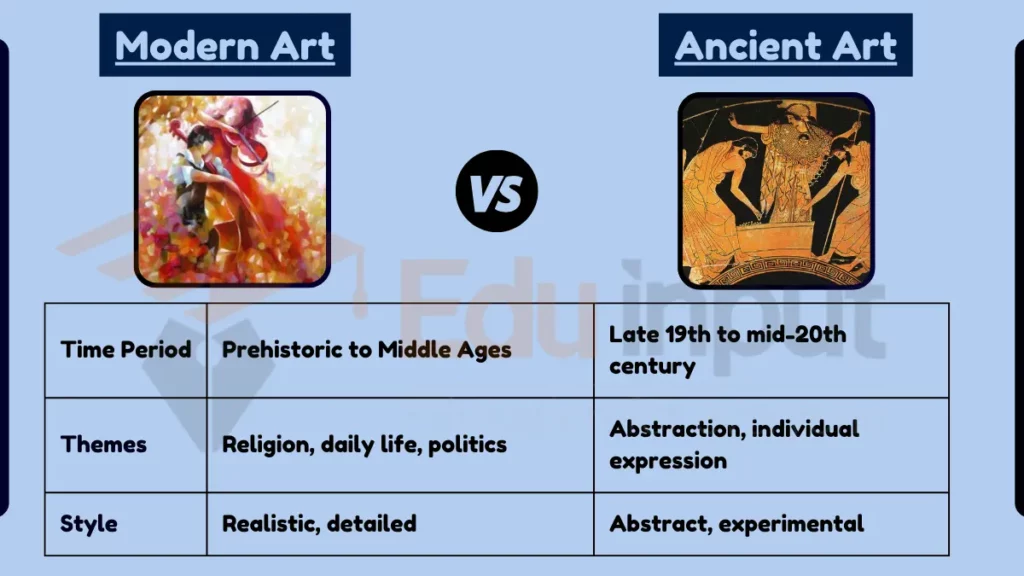Difference Between Modern Art and Ancient Art
Key Difference
Modern art and ancient art are distinct in their styles, themes, methods, and historical context. Ancient art refers to artworks created in civilizations that existed before the Middle Ages, focusing on religious, political, and everyday life themes. It includes paintings, sculptures, and architecture, characterized by their attention to detail, symbolism, and craftsmanship.

Modern art, which began in the late 19th century and extended into the mid-20th century, breaks away from traditional techniques and subjects. It emphasizes innovation, abstract ideas, and the expression of individual perspectives. Modern art includes movements like Impressionism, Cubism, and Surrealism, and is known for its experimental approaches to color, form, and materials.
Comparative Analysis
- Time Period:
- Ancient Art: Dates back to prehistoric times and includes periods up to the Middle Ages.
- Modern Art: Emerged in the late 19th century, extending to the mid-20th century.
- Themes and Subjects:
- Ancient Art: Focuses on religion, mythology, daily life, and political figures.
- Modern Art: Centers on abstraction, expression, and conceptual ideas.
- Style and Techniques:
- Ancient Art: Realistic representation, meticulous craftsmanship.
- Modern Art: Experimentation with abstraction, diverse techniques and materials.
- Cultural Significance:
- Ancient Art: Reflects the beliefs, values, and social structures of ancient civilizations.
- Modern Art: Represents the artist’s individual perspective, societal changes, and innovation.
- Representative Movements:
- Ancient Art: Egyptian, Greek, Roman, and Byzantine art.
- Modern Art: Impressionism, Cubism, Surrealism, Abstract Expressionism.
Table Summary:
| Feature | Ancient Art | Modern Art |
|---|---|---|
| Time Period | Prehistoric to Middle Ages | Late 19th to mid-20th century |
| Themes | Religion, daily life, politics | Abstraction, individual expression |
| Style | Realistic, detailed | Abstract, experimental |
| Cultural Significance | Reflects ancient societies | Reflects modern perspectives, change |
| Movements | Egyptian, Greek, Roman | Impressionism, Cubism, Surrealism |
Ancient art and modern art represent two vastly different eras in art history, each with unique characteristics and significance. Ancient art provides insight into the cultures and societies of past civilizations, while modern art reflects the evolving nature of artistic expression, focusing on innovation and individuality. The transition from ancient to modern art marks a significant shift in how artists perceive and represent the world around them.



Leave a Reply